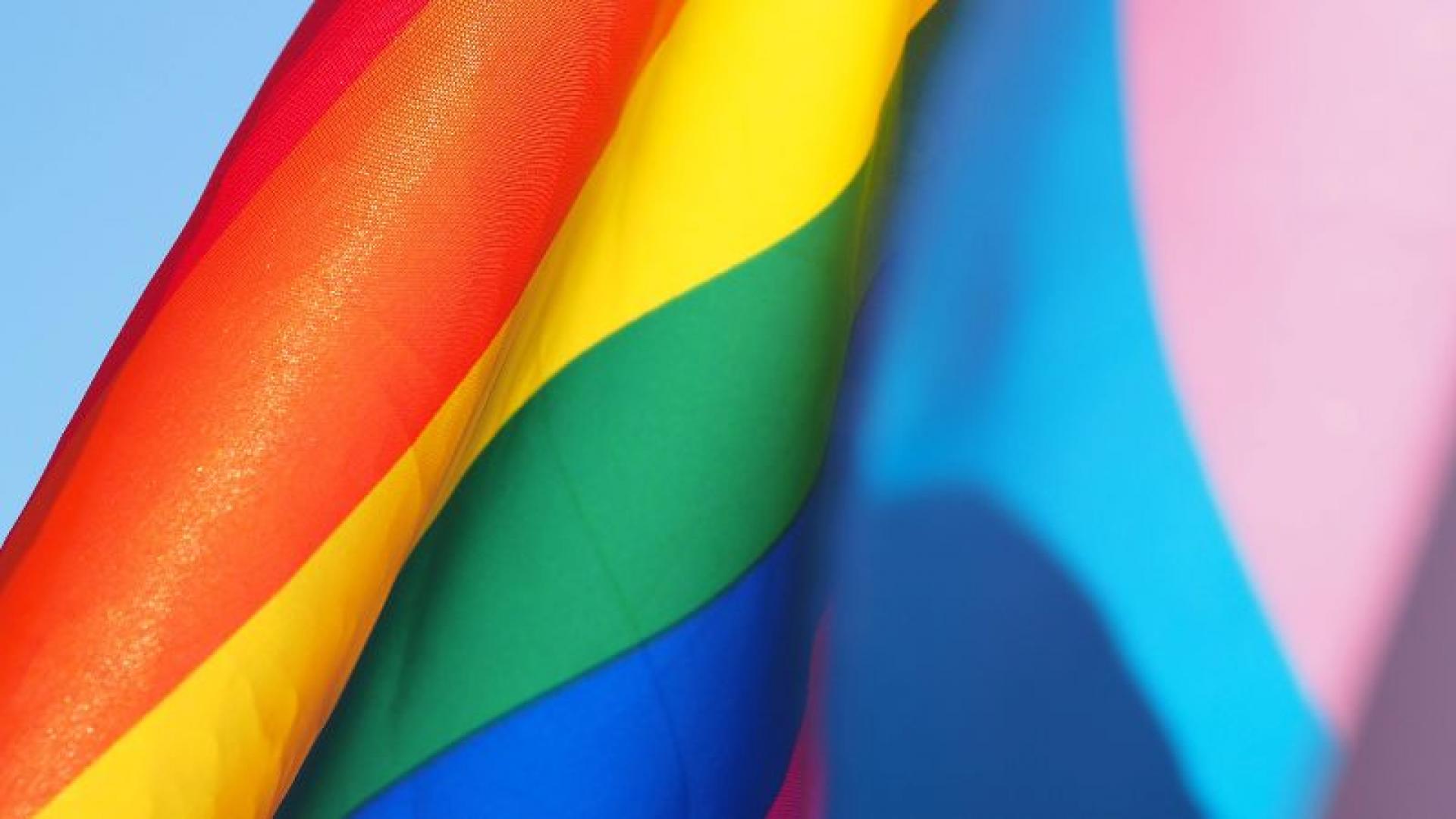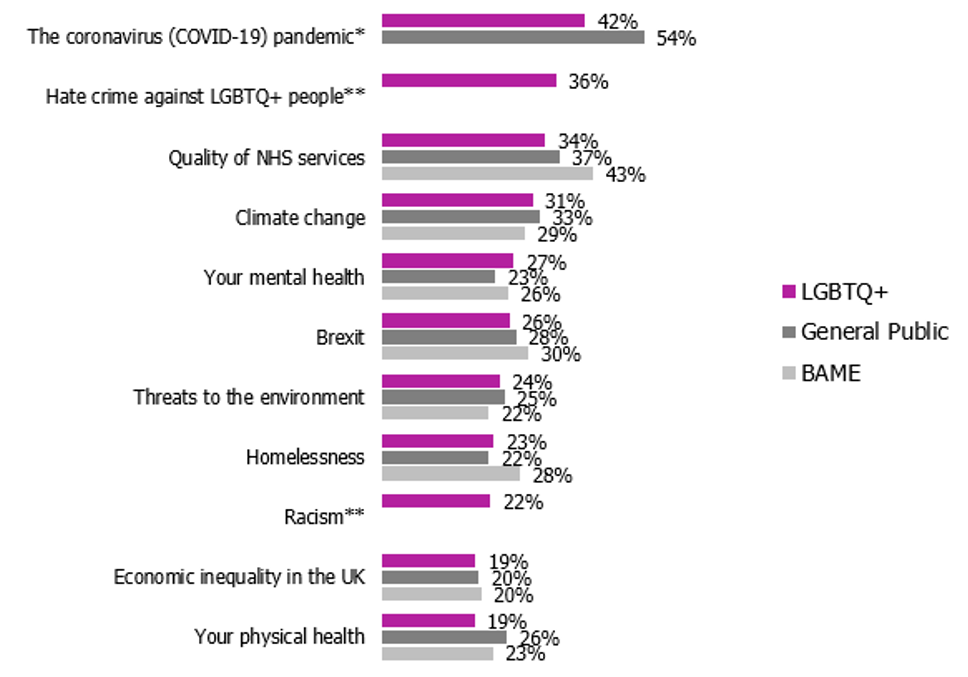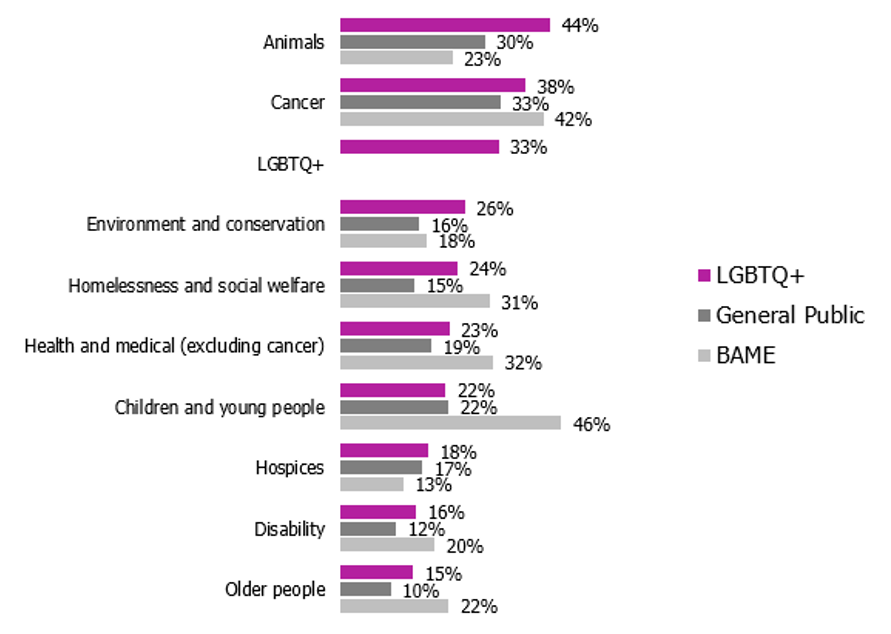In June we published a blog discussing the importance of learning more about under-researched communities where we also shared the results of a survey with the UK’s Black, Asian and Minority Ethnic (BAME) population. That research ran across December and January 2019-20 and surveyed 1,000 people from BAME communities on how they engage with charities as donors, campaigners and service users. To complement this research and address the gap between charities and yet another audience that remains largely under-researched in the charity sector, we wanted to survey the UK lesbian, gay, bisexual, transgender and queer (LGBTQ+) community to get their perspectives on how and why they engage with charities who often speak on their behalf.
Our sample was made up of 1,025 individuals who identified as LGBTQ+, approximately representative of the UK LGBTQ+ population by age, region and sexual identification. The fieldwork ran for two weeks in July and August and yielded some very interesting results.
Key findings
LGBTQ+ giving levels are on par with the general public
Our findings from the latest wave of Charity Awareness Monitor (CAM) which was in field almost in parallel to our LGBTQ+ survey showed that only 54% of the general public in the UK report having given in the last 3 months. This was the lowest figure recorded since we started tracking this ten years ago and definitely an alarming one given the difficult and uncertain times charities are now through. The good news, however, is that the LGBTQ+ community do not report giving below this level – the figure actually goes up to 57% when asked if they have donated to any charities in the past 3 months, and is especially high among those above 65 years of age (73%) and the AB social grade (64%).
Talking about the ways in which people have given over the last 12 months, we noticed that the pattern is broadly similar between the general public and the LGBTQ+ group. However, two methods stood out among the latter, as significantly more LGBTQ+ have reported giving via debit or credit card (44% v 33%) and buying products that include a charitable donation (51% v 39%). The latter could be due to the timing of our survey and be affected by its proximity to Pride when more opportunities to give in this way were present than usual.
Charitable attitudes and engagement
We asked respondents to tell us which issues they are currently most concerned about and prompted our standard issues of concern list which includes nearly 20 issues, ranging from Brexit to Quality of schools in the UK. Chart 1 compares LGBTQ+ data with that of the general public and BAME.
Please note that the fieldwork for the BAME research was in November – January 2019-20, before the COVID-19 pandemic. Therefore, the results can’t be strictly comparable with our LGBTQ+ research and latest CAM data.
Chart 1: Issues of concern
“Thinking about the following issues, please select up to five that you are most concerned about."
Source: LGBTQ+ Charity Engagement Research, Jul/Aug 20, nfpSynergy | Base: 1,025 adults 16+, Britain; Charity Awareness Monitor, Aug 20, nfpSynergy | Base: 1,000 adults 16+, Britain; BAME Charity Survey, Nov 2019 – Jan 2020, nfpSynergy | Base: 1,019 adults 16+, Britain
Interestingly, the LGBTQ+ community is less concerned about
- the pandemic
- physical health
- immigration*
- terrorism*
- their personal financial security*
* (not shown on the chart)
than the general public. On the other hand, their concern about personal mental health is higher and the rest of prompted issues remain broadly on par with the general public levels.
When looking at favourite charities, the majority of prompted causes appear more favourable within the community. However, there are a number of areas which are significantly more popular:
- Animals
- Environment and Conservation
- Homelessness and social welfare
Chart 2 below shows more detail on this.
Chart 2: Favourite causes
“When you think about your favourite charities, which category do they fall into?"
Source: LGBTQ+ Charity Engagement Research, Jul/Aug 20, nfpSynergy | Base: 1,025 adults 16+, Britain; Charity Awareness Monitor, Aug 20, nfpSynergy | Base: 1,000 adults 16+, Britain; BAME Charity Survey, Nov 2019 – Jan 2020, nfpSynergy | Base: 1,019 adults 16+, Britain
We also found that the main motive to support charities is caring about the cause, with 6 in 10 placing it at the top. This is followed by having personal experience of a cause (28%) and a personal experience of a charity (26%), whereas the matter of inclusivity of the LGBTQ+ community was only selected by 21% of the respondents.
Perceptions around inclusivity
Another thing we wanted to test in this survey was the community’s views on the question of inclusivity in the charity sector. To do this, we asked respondents to record a short video telling us what they think charities could do to be more inclusive towards people who identify as LGBTQ+. They could tell us about organisations who are focused on LGBTQ+ issues specifically or charities in more general terms.
This was a new format for us and the insight we got from the videos is tremendously interesting. Generally, we heard some positive feedback on increasing inclusivity, coupled with calls for diversity training and demonstrating inclusiveness in all comms. Some mentioned the importance of “embracing diversity within their own organisations, including that of the LGBT community” and a more nuanced identification of groups under the LGBTQ+ umbrella. A few charities have also been mentioned very positively as inclusive brands by our respondents, including Samaritans, Mind, Shelter, akt and Stonewall. However, perhaps unsurprisingly, there was a lot of scepticism around religious organisations or faith-based charities, including some large brands as the quotes below demonstrate:
"Large charities have a strong religious foundation… I would certainly interpret them as having a non-inclusive attitude towards different communities."
- Survey respondent
"I think religious charities like Christian Aid, Salvation Army, etc. need to put the religious stamp on LGBT communities aside and work as a charity, therefore helping everyone, regardless of their background, gender, sexual orientation."
- Survey respondent
"I think most charities are fine, but there are some, you know, religious organisations which still take a pretty dim view of the LGBT community."
- Survey respondent
These comments clearly urge charities with a religious foundation to take a more proactive stance in this field, reassuring people about their equal treatment regardless of gender, sexual orientation and background in general.
This was both an exciting and perhaps slightly uncertain tool for us as we didn’t expect a lot of people to talk about this on camera (this was not at all compulsory). However, we were pleasantly surprised and maybe slightly overwhelmed with the level of feedback – over 50 respondents decided to share their views! Thanks to this new method we’ve got richer and more comprehensive qualitative insights from this under-researched audience group which is definitely something we are looking forward to using in our future research projects.
With this piece of research, we wanted to raise awareness and improve understanding of the LGBTQ+ community in the charity sector. We hope that this could be of great benefit to those charities working with the community directly as well as the sector as a whole, by allowing charities to make more informed decisions about the ways they engage with this audience and tailor their services and messaging accordingly.
We need funding for our
We need funding for our project in Ghana West Africa. Health Digest Foundation. Thank you Sir.
Hi Charles, thanks for
Hi Charles, thanks for getting in touch.
We are not a funding organisation though - we specialise in market research. Thanks for your interest nonetheless. Max



